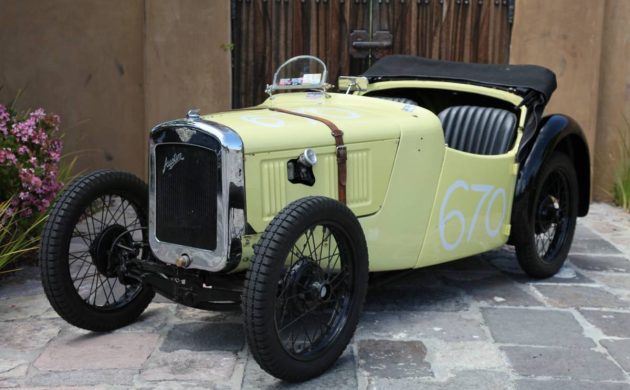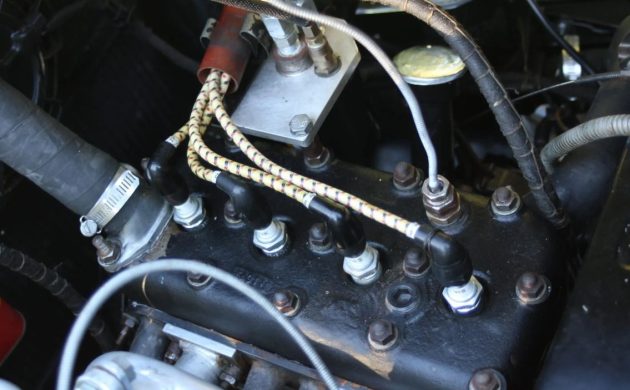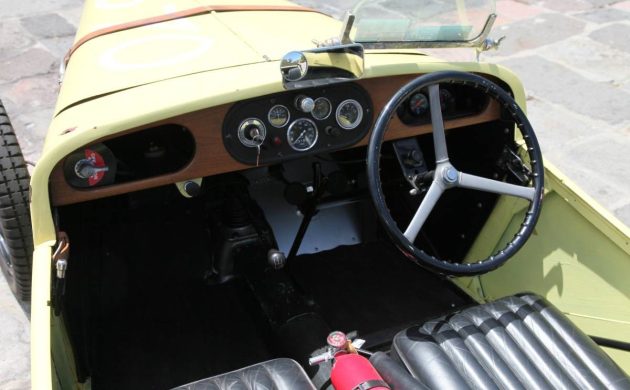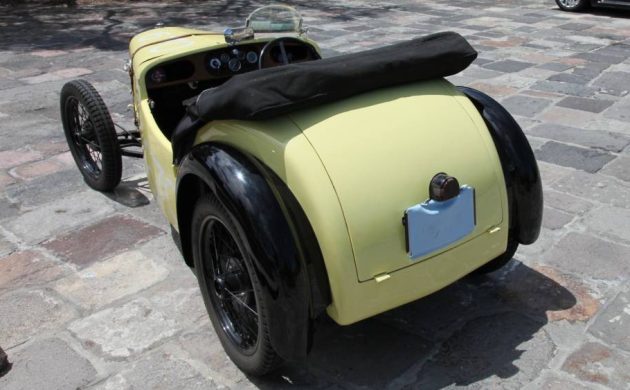Auto companies springing from British bicycle and motorcycle manufacturing were as common as dirt in the early 1900s, but Austin derived from Wolseley, which made sheep shearing equipment. Herbert Austin was running Wolseley when he started making motors to sell, to ease the cyclicality of catering to sheep. A bumpy road eventually led Austin to form a standalone automaker. During WWI, the company’s huge facility made war machinery of all types, but post-war success was elusive. Receivership arrived in 1921. Sometimes clearing the decks leads to rejuvenation, and so it was with Austin. Run by a trio of experienced industrialists, Austin introduced several new models, including the Seven. Its tiny engine was taxed lightly under British rules – that circumstance and its cheap price led to strong sales. The Seven sold well all over the world, ushering Austin through the Great Depression on a cushion of profitability. Several body styles were available, including today’s 1935 Austin “Nippy”. Located in Monterey, California, this car has seen track time at Laguna Seca recently. Let’s see what going fast in a slow car is all about!
Starting in 1923, Sevens were powered by Austin’s 747 cc four-cylinder side-valve engine, fed by a Zenith downdraught carburetor. Sporting models – such as the Nippy’s near-twin, the Speedy – made about 26 hp with performance parts and a higher compression ratio. Out of the box, the Nippy came in a 21 hp, but this mill has been rebuilt for its racing career with a massaged cylinder head, oversized valves, high compression pistons, a high-torque camshaft, and more. The Zenith has been replaced with a single 1.25″ SU. To provide clearance for the SU, the bonnet was altered. Gearchanges are courtesy of a close-ratio, four-speed manual with synchros on second through fourth. Typical of pre-war cars, the brakes are mechanical, but at least they’re on all four wheels. When the Seven was launched, the front brakes were operated with a handbrake, separate from the foot pedal controlling the rears. This car’s mechanical components have been well-maintained to keep it reliable during its multiple years of participation at the Monterey Historics.
A cut-off switch for the electrical system, the fire extinguisher, and auxiliary gauges for amps and water temperature positioned in the glove compartment declare the Nippy’s racing intentions. The door panels have been removed. A Brooklands windscreen is currently installed, and the car is minus its cycle fenders and headlights. Most of its original parts – windshield, headlamps, fenders, and more – do accompany the car.
This Nippy sold two years ago on a different site for $35,115. The current owner is advertising the car here on craigslist, for $39,500. Well-prepared race cars can command premium prices, no question, but patience will be required to find the right new owner for this tiny racer. If I could swipe this nifty Nippy for a few thousand dollars less, I’d re-install its original equipment and race around my neighborhood with abandon. What would you do – track it, or keep it for around town?






After a couple of trips to the track for laughs, preferably wearing a helmet that looked like a toad’s head, I’d do whatever minimum it would take to put it on the street legally and enjoy the hell out of it.
Recently saw a couple in a museum in Brussels…they are very cute.
https://www.youtube.com/shorts/JPMAJAj3rQc
Really cute car. I think Seven refers to the fact that this car was taxed as a Seven horsepower car even if the engine cranked out 3x that much power.
I’m not sure how the government calculated taxable horsepower. I think it was a displacement calculation.
As an alternative to EV’s I think there would be a market for an ultra lightweight car if government could relax regulations.
The early method of calculating taxable horsepower in the UK was by bore. Of course, this meant engines in English cars would have long strokes.
Taxing was not on displacement, but on either stroke or bore (can remember which) so most of the cars either had a short stroke and big bore or vice versa. There is always someone figuring out how to beat the tax man…
I think that to keep the tax down it was done using a narrow bore and a long stroke. Also the first Austin Seven only had a two main bearing crankshaft, one front and one rear! I stand to be corrected though.
Correct. For racing, I believe that the setup to have is a Phoenix 2-bearing crank in a 3-bearing case with the centre main housing removed. Depending on your cylinder head, you may also need to skim the tops of pistons 2 and 3 due to the crank whip.
The reason for all this is that most crank breakages occurred around the centre main, and the 3-bearing cases are more robust.
That reminds me; must get my cylinder head back…
These cars were made from 1923 to 1939. Three main bearing crank was introduced in1936. Had a friend who used to race one, he said his rev limiter was when he heard the centre two pistons hitting the cylinder head as the crank whipped about at high revs.
As a life-long British car enthusiast, I’d love to put this back to original street use and show it at local cars and coffee. My uncle just built a similar “Bantam” for the street placing a super charged V6 and auto making it a mini “muscle” machine. Looks great and runs fantastic. Just hoping he gives me a chance to purchase it if and when the time comes… fingers crossed!
1st pic I thought it was 3 wheel.
Austin 7, such was the 1930s.
Rd registered today? nah, only if EV…
If I only had the room, and the price was a bit less. Though, I will be honest it’s probably worth every penny for the fun / cute / different factor. Somebody is going to get a very neat, cool little car! So, whoever you are, cheers to you!
Maybe it will fit in your living room.
It will, take my word for it…!